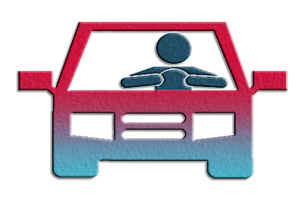Why won’t my car go in reverse?
Reasons Why Your Car Won’t Go in Reverse

- Transmission Issues
The transmission system transfers power from the engine to the wheels. Problems within this system can stop the car from going into reverse.
Causes
- Low Transmission Fluid: Insufficient fluid can cause the transmission to malfunction.
- Worn Transmission Components: Gears, clutches, and other parts can wear out over time.
- Faulty Transmission Control Module: This electronic component controls the gear shifting and can malfunction.
- Shift Cable or Linkage Problems: The cables or linkages that connect the gear shifter to the transmission can become stretched or broken.
- Clutch Problems (Manual Transmissions)
In manual transmissions, the clutch is a key component for shifting gears.
Causes
- Worn Clutch: A worn clutch might not engage properly.
- Hydraulic Issues: Problems with the clutch hydraulic system, example: leak, can prevent gear engagement.
- Faulty Clutch Pedal: The pedal itself or its mechanism can fail.
- Differential Issues
The differential distributes engine power to the wheels. Problems here can affect movement in reverse.
Causes
- Damaged Gears: Inside the differential, gears can break or wear out.
- Low Differential Fluid: Insufficient lubrication can cause damage or malfunctions.
- Electrical Problems
Modern cars rely heavily on electrical systems to control various functions, including shifting gears.
Causes
- Blown Fuses: Specific fuses related to the transmission can blow out.
- Wiring Issues: Damaged or corroded wires can disrupt communication between the shifter and transmission.
- Brake System Malfunctions
Certain issues with the brake system can prevent a car from shifting into reverse.
Causes
- Stuck Brake Calipers: If a brake caliper is stuck, it can prevent wheel movement.
- Faulty Parking Brake: A malfunctioning parking brake can cause the car to stay engaged in gear.
- Shifter Mechanism Problems
The gear shifter itself can have mechanical issues.
Causes
- Broken Shifter Mechanism: Physical damage to the shifter can prevent gear engagement.
- Blocked Shifter Pathway: Objects or debris blocking the pathway can cause issues.
- Software Glitches (For Modern Cars)
Modern cars use software to control many aspects of the transmission.
Causes
- Software Bugs: Glitches or bugs in the car’s software can prevent proper gear shifting.
- Outdated Software: Older software might have unresolved issues or lack necessary updates.
What to Do

Check Transmission Fluid: Ensure the fluid level is adequate and top up if necessary.
Inspect for Leaks: Look for any signs of fluid leaks under the car.
Examine the Transmission: If you suspect internal issues, take your car to a professional mechanic for a thorough inspection.
Check the Clutch (Manual Transmission): If the clutch feels off, it might need adjustment or replacement.
Test the Differential: Have a mechanic inspect the differential if you suspect issues.
Inspect Electrical Components: Check fuses and wiring for any signs of damage or wear.
Check the Brakes: Ensure the brake system is functioning properly, including the parking brake.
Inspect the Shifter Mechanism: Make sure there are no obstructions or physical damage.
Update Software: For modern cars, ensure the car’s software is up to date and free from bugs.
Interesting Facts


Transmission Fluid Lifespan:
Transmission fluid typically lasts between 30,000 to 60,000 miles, but this can vary based on driving conditions and car model.
Complexity of Modern Transmissions:
Modern automatic transmissions can have over 1,000 individual parts, making them highly complex systems.
Electronic Controls:
Since the early 2000s, most cars have switched to electronic control modules for transmission management, improving efficiency and control but also introducing new potential failure points.
Self-Diagnosing Cars:
Many modern cars can self-diagnose transmission issues and display error codes, which can be read by an OBD-II scanner.
Preventive Maintenance:
Regular maintenance, including fluid changes and system checks, can significantly extend the life of your car’s transmission and prevent many issues.
Understanding why your car won’t go in reverse involves examining a range of potential issues, from fluid levels to complex electronic systems. Regular maintenance and timely inspections can help keep your transmission functioning smoothly and prevent these problems from arising.












